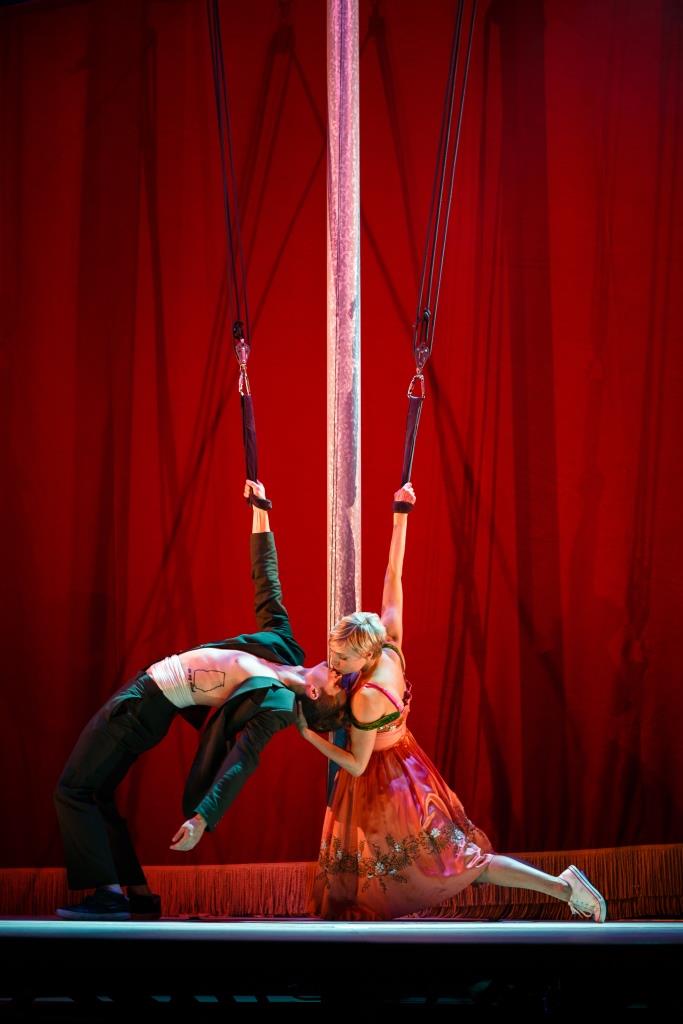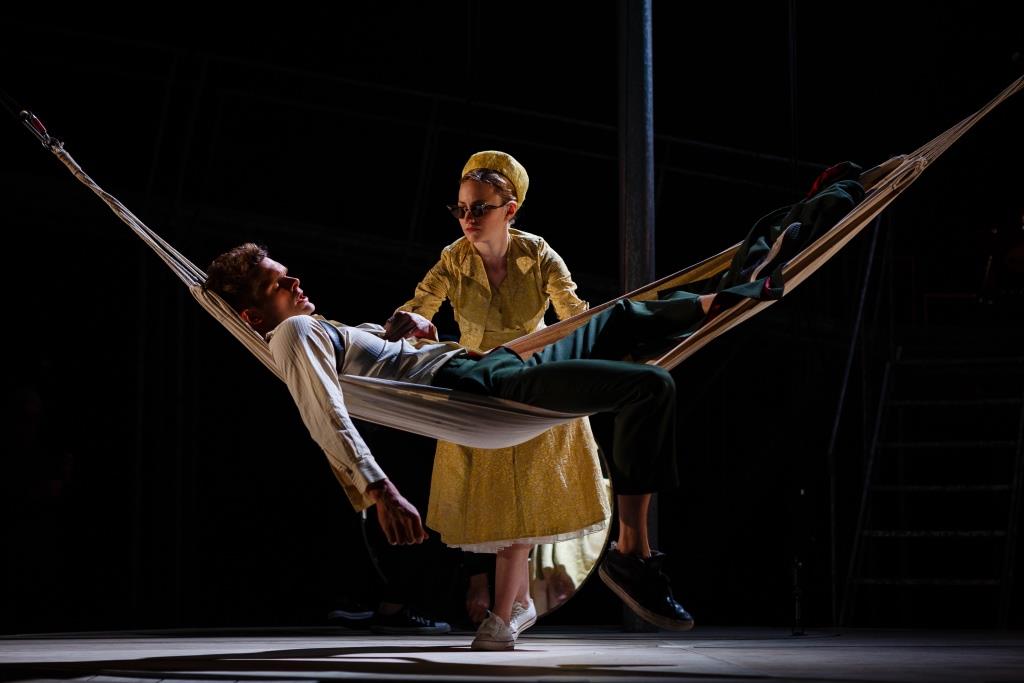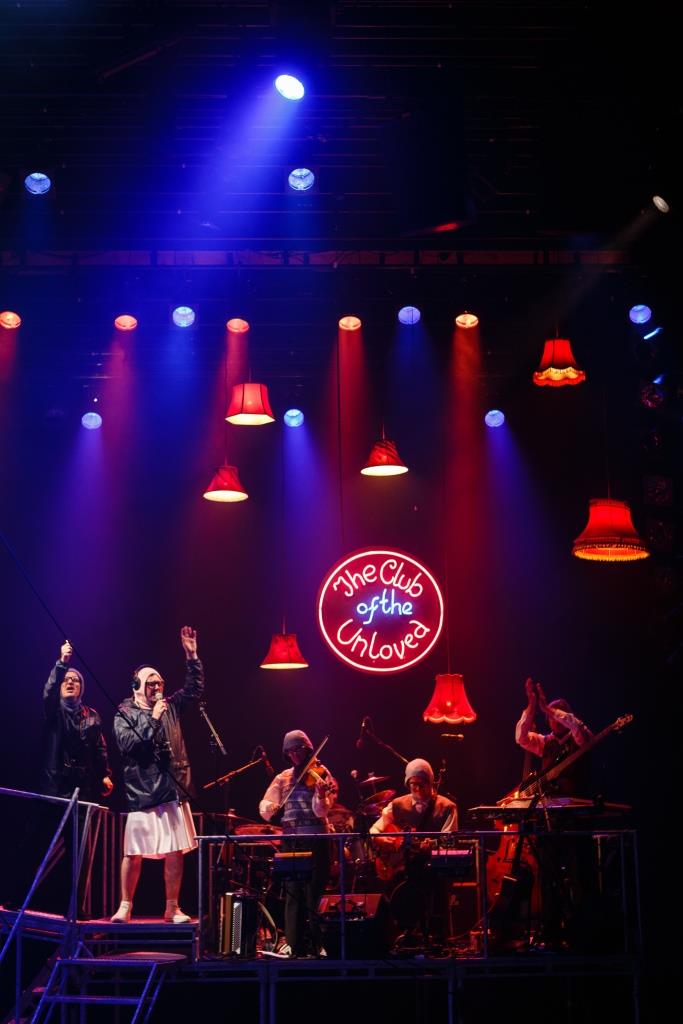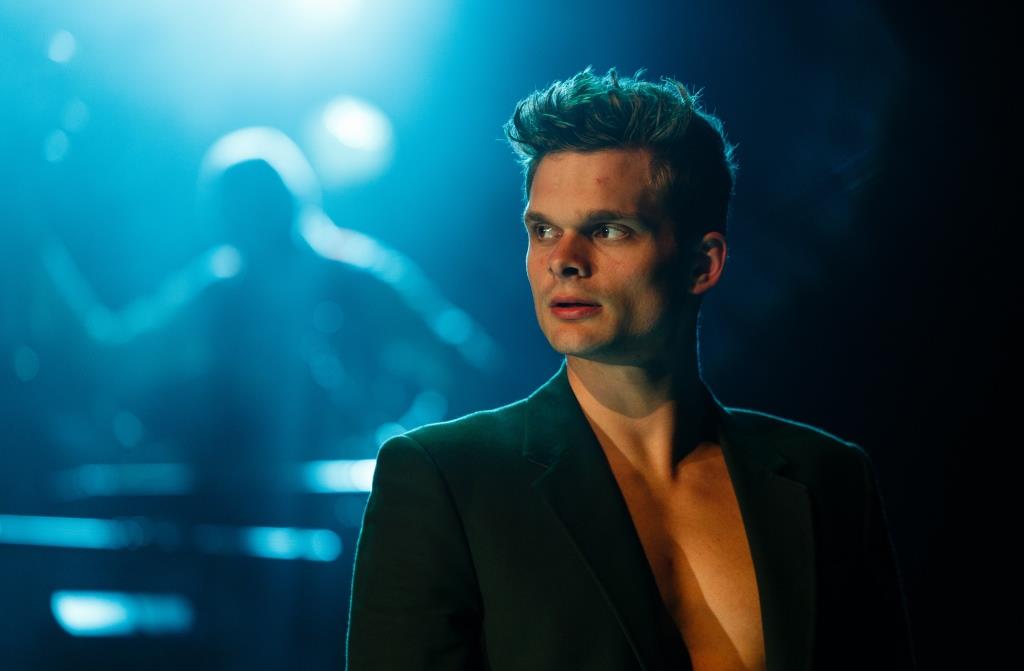Show Don’t Tell
Four years ago, the UK-based Kneehigh Theatre wowed Twin Cities audiences with an adaptation of Noel Coward's BRIEF ENCOUNTER. Their return to the Guthrie stage, TRISTAN & YSEULT, has the same high-octane stagecraft if not quite as much magic.




Four years ago a British company, Kneehigh Theatre, stunned Twin Cities audiences with its magical adaptation of a Noel Coward screenplay, Brief Encounter, staged at the Guthrie Theater. The company’s highly anticipated return to the Minneapolis theater has arrived with a production of Tristan & Yseult, based on a Celtic legend resembling the King Arthur/Guinevere/Sir Lancelot love triangle. Tristan & Yseult, adapted and directed by Emma Rice, employs a similar array of tricks, theatrical devices, gesture work and music as Kneehigh’s Noel Coward adaptation of a few years ago. But this latest production lacks the sense of wonder engendered by the earlier show – until the last 10 minutes, anyway, which very nearly make up for the shortcomings in rest of the play.
Like the company’s iteration of Brief Encounter, Kneehigh’s kinetic, physical style of theater-making energetically propels the story of Tristan and Yseult forward. The actors’ thoughtful gesture work, in particular, heightens the performances, with movement so deliberate it’s as much dance as acting. These gestures are, at times, linked to individual character traits; sometimes they are repeated throughout the play or performed simultaneously by a number of performers. Oftentimes, these repeated movements are symbolic, intended to speak to larger narrative themes rather than serving to illustrate particular emotions or moments in character. For example: at several points in the play, one performer shoots an invisible arrow, and another mimes the act of being struck in the heart.
Also like Brief Encounter, Tristan & Yseult uses a live band, in this case high above the action of the stage, playing from a perch in the scaffolding and led by a mysterious blonde singer in 1950s-period dress, a female character called Whitehands (Carly Bawden). The live band plays a variety of music — old jazz standards and torch songs, Latin American tunes and country music — as an upbeat soundtrack to the events of the play. The band is central, like a Greek chorus rather than mere accompaniment; bolstered by a ragtag group of watchers armed with tin can antennas, the musicians’ offerings serve as commentary on the action.
The band’s leader, Whitehands, is a mysterious figure throughout most of the play: she struts and sings and engages with the other characters on stage, but we are never clear about the nature of her relationship to them, or her part in the action of the story, until the very end.
Therein lies my problem with this production. Because we’re given so little information about her, the character’s vital importance to the central narrative of unrequited love doesn’t get much traction until late in the game. And her story, when it’s at last revealed, is a devastating one. The director’s decision to wait so long before letting us in on the secret effectively shortchanges emotional nuance for the sake of raising the dramatic tension.
The decision to wait so long before letting us in on the secrets behind these characters’ tangled love affairs effectively shortchanges emotional nuance for the sake of raising the dramatic tension.
The tricks and stage gimmicks in Tristan and Yseult are notable as displays of skill – the trampoline work, for example, and the actors’ apparently effortless flying from harnesses are both impressive — but they’re rarely surprising. You might marvel at the mechanisms’ ingenuity, the bells and whistles, but it’s little more than clever stagecraft without the sort of theatrical magic that could transport an audience more fully into the story.
The relationships at the center of Tristan & Yseult develop mostly by way of direct address, through speechifying rather than interactions shown between the characters. And while Etta Murfitt as Yseult, Stuart Goodwin as King Mark, and Andrew Durand as Tristan are all fine performers, the chemistry between them simply isn’t evident. It’s hard to figure out why Yseult loves these two men. We’re never given satisfying answers to basic questions like: Why would a woman fall in love with the two people responsible for her brother’s death? That’s a problem with the original tale too, admittedly. But this production might have done a better job drawing out the necessary textures in the characters’ interplay to spin a more persuasive accounting of how such against-the-odds love might bloom. Of course, all these pesky contradictions could be explained by the love potion that Yseult consumes, but that feels too glib. I know I wanted to see our heroine wooed, her affections won in intimate conversation, as in the Queen Anne scene of Shakespeare’s Richard III.
The most developed character turns out to be Yseult’s handmaid, played in drag by Craig Johnson (the same actor who plays her brother). As Brangian, Johnson brings not only a welcome silliness to the role, but also manages to evoke the heartfelt emotion of a woman who must love from the shadows. Brangian’s unrequited affections serve as a thematic ballast for the play, reinforcing the emotional impact of late-arriving revelations about the character of Whitehands.
Speaking of which, as I noted earlier, the play’s final moments really do (almost) make up for the rest, with a series of spectacular moments that are simply breathtaking. The last ten minutes work where the rest of the play doesn’t because, at last, we are able to fully invest emotionally in this tangle of human affairs on stage. We finally have all the necessary information to fully engage the characters and their struggles, and that makes all the difference. It’s rich, heavy material that ultimately strikes a resonant chord, but there’s a lot of fluff in between.
____________________________________________________
Related performance details:Tristan and Yseult, by Kneehigh Theatre, is on stage at the Guthrie Theater in Minneapolis through March 23. For more information, including specific showtimes and ticket details, visit the Guthrie website.